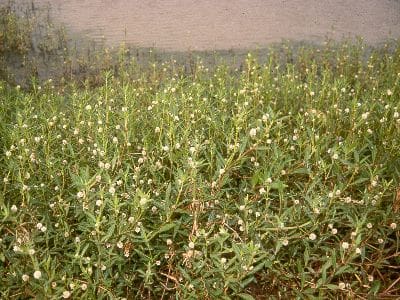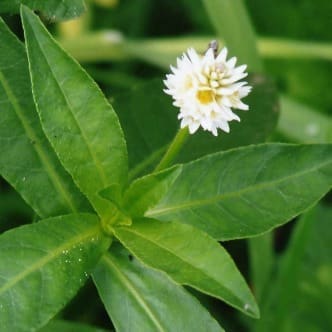Disposing of alligator weed properly is crucial to prevent its re-establishment and spread. This article, “Best Ways to Dispose of Alligator Weed After Removal,” will guide you through the most effective methods to ensure that once you’ve removed this invasive species from your property, it doesn’t come back to haunt you. You’ll learn about various disposal techniques, from composting and incineration to using landfill methods, each tailored to ensure the weed is thoroughly eradicated. By following these best practices, you can protect your garden and local ecosystem from the persistent threat of alligator weed. Have you ever found yourself tackling the seemingly never-ending task of removing alligator weed from your yard or property? If you’ve managed to get rid of it, you’re likely wondering what the best ways are to dispose of this invasive plant. Let’s dive into this important topic and explore some efficient and environmentally friendly strategies for disposing of alligator weed after removal.

Understanding Alligator Weed
Before we dive into disposal methods, it’s essential to understand what alligator weed is and why proper disposal is so important. Alligator weed (Alternanthera philoxeroides) is a fast-spreading invasive plant species known to thrive in both aquatic and terrestrial environments. Native to South America, it has spread to many parts of the world, causing significant problems for local ecosystems.
The Threat of Alligator Weed
Alligator weed can quickly choke waterways, outcompete native vegetation, and disrupt local biodiversity. Its rapid growth and aggressive nature make it a formidable opponent for those trying to manage it. Thus, proper disposal after removal is crucial to prevent it from re-establishing and spreading further.
Tools and Equipment for Safe Removal
Before you can dispose of alligator weed effectively, you need to ensure you’re using the right tools and equipment for removal. The proper gear will make the process easier and safer for you and the environment.
| Tool/Equipment | Purpose |
|---|---|
| Gloves | Protects hands from irritation and injury |
| Garden Fork/Rake | Helps in loosening and gathering weed |
| Trash Bags/Rough Totes | For temporarily holding gathered weed |
| Shovel | Useful for digging out deep roots |
| Protective Clothing | Full-coverage clothing to avoid contact |
| Bucket or Container | Collecting and transporting weed |
By using these tools, you can ensure the alligator weed is removed thoroughly and prepared for proper disposal.

Best Ways to Dispose of Alligator Weed
Once you have successfully removed the alligator weed, the next step is to dispose of it correctly. Improper disposal can lead to the weed spreading to new areas and undoing all your hard work.
1. Composting and Mulching: Caution Advised
You might think composting or mulching is a good way to dispose of plant material. However, when it comes to alligator weed, be cautious. This plant is notorious for its ability to re-root and grow from tiny fragments. If you decide to compost, make sure the composting process generates enough heat to kill all parts of the weed, including roots and seeds.
2. Burning: A Complete Elimination
Burning is one of the most effective ways to ensure that the alligator weed is completely destroyed. This method involves collecting the weed in a designated area and setting it on fire. Be sure to check your local regulations and obtain any necessary permits, as burning plant material can be restricted in certain areas.
3. Landfilling: Safe and Secure
Another highly recommended method is to dispose of the alligator weed at a landfill. Bag the weed securely in heavy-duty garbage bags to prevent any escape and transport it to your local waste facility. Verify with the facility to ensure they accept invasive plant material.
4. Solarization: Using the Sun
Solarization involves placing the pulled alligator weed under a clear plastic sheet in a sunny location. The heat generated from the sun can kill the weed over time. This method is more time-consuming but eco-friendly and effective for small infestations.
5. Chemical Disposal: An Option of Last Resort
If you’re dealing with an extensive infestation, chemical treatments before removal can weaken and kill the plant. Make sure you follow up by properly disposing of the dead plant material. Use herbicides approved for alligator weed control and handle them with care to avoid damaging surrounding vegetation.
Precautions to Prevent Recontamination
No matter which disposal method you choose, there are some vital precautions to take to ensure the alligator weed does not reinfest your property or spread to new locations.
- Double-bagging: Always double-bag the weed in sturdy garbage bags to prevent any pieces from escaping.
- Cleaning tools: Thoroughly clean all tools and equipment after use to remove any plant fragments.
- Access control: Limit access to the disposal area to prevent the spread of seed or plant fragments by wind or animals.
Resources and Assistance
If the task seems overwhelming, don’t hesitate to seek professional help. Local environmental agencies or invasive species control organizations can provide valuable guidance and assistance in effectively managing and disposing of alligator weed.
Long-term Maintenance and Monitoring
Successfully removing and disposing of alligator weed is a significant victory, but the battle doesn’t end there. Regular monitoring and maintenance are crucial to prevent re-establishment.
Regular Inspections
Conduct regular inspections of your property, especially areas previously infested with alligator weed. Early detection of any new growth can help you address the problem before it becomes unmanageable.
Sustainable Landscaping Practices
Consider implementing sustainable landscaping practices to reduce the chances of invasive species taking hold. Plant native species, create buffer zones around water bodies, and avoid disturbing soil unnecessarily.
Monitoring Water Bodies
If your property includes a water body, such as a pond or lake, keep a close eye on it. Alligator weed thrives in aquatic environments, so regular monitoring and management of water bodies are essential.

Community Involvement and Education
Raising awareness and involving your community in the fight against alligator weed can significantly enhance control efforts. Here are some ways to foster community involvement:
Educational Workshops
Organize or participate in workshops and seminars on invasive species management to educate your community about the importance of proper disposal methods.
Volunteer Cleanup Efforts
Join or initiate volunteer cleanup projects to remove alligator weed from public spaces and water bodies. These efforts can help to address larger infestations that extend beyond individual properties.
Reporting and Collaborating
Report any sightings of alligator weed to local authorities or environmental agencies. Collaborate with them to ensure coordinated and effective control measures are in place.
Conclusion: Your Role in Protecting the Environment
Disposing of alligator weed properly after removal is not just about keeping your yard or property clear of this invasive plant—it’s also about protecting the broader environment. By following these best practices for disposal, you can help prevent the spread of alligator weed and contribute to the health and well-being of local ecosystems.
Remember, your efforts, while perhaps seeming small, can make a significant impact. By using the right tools, choosing effective disposal methods, taking necessary precautions, and involving your community, you can play a crucial role in controlling and eliminating alligator weed in your area. Together, we can create a healthier, more sustainable environment for all.
So, the next time you find yourself dealing with alligator weed, you’ll know exactly what steps to take to dispose of it efficiently and responsibly. Good luck, and happy gardening!

